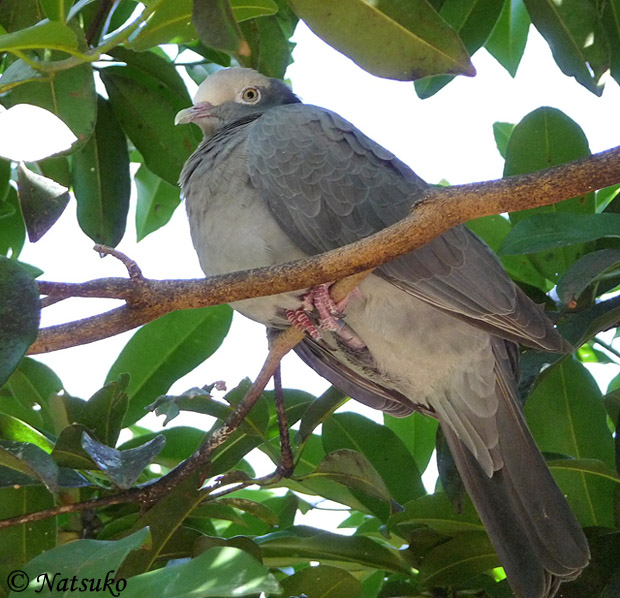| Length: 13 inches | Wingspan: 24 inches | Seasonality: Non-resident in South Dakota |
| ID Keys: Dark gray overall, white crown, dark pinkish bill with paler tip, iridescent greenish back of neck with scaled appearance, pinkish legs and feet | ||
 The
White-crowned Pigeon is a large pigeon with a range that mostly covers the
Caribbean. However, they also will nest in the summer in coastal areas
of southern Florida. They are a fruit-eating species, and the presence
of the birds typically depends upon the presence of large fruit or berry
crops. When fruits and berries become less available in a certain
area, the White-crowned Pigeon will often relocate to more favorable
habitats. While they nest in coastal mangroves, they often move
to inland areas to feed.
The
White-crowned Pigeon is a large pigeon with a range that mostly covers the
Caribbean. However, they also will nest in the summer in coastal areas
of southern Florida. They are a fruit-eating species, and the presence
of the birds typically depends upon the presence of large fruit or berry
crops. When fruits and berries become less available in a certain
area, the White-crowned Pigeon will often relocate to more favorable
habitats. While they nest in coastal mangroves, they often move
to inland areas to feed.
Habitat: Found nesting in mangrove areas along the coast. They will use different forest habitats outside of the breeding season, but are usually found in lowland, tropical hardwood woodlands.
Diet: Feeds on fruits and berries, as well as seeds. They may occasionally feed on small invertebrates such as insects or snails.
Behavior: Forages in the canopy of trees and shrubs, searching for fruit.
Nesting: The nest of a White-crowned Pigeon is a loose platform of twigs and grasses, placed in a tree or shrub. They also sometimes build their nest directly on the ground, mostly in areas such as small islands where predators are not an issue. The female usually lays 2 eggs, and both parents help to incubate them. After the eggs hatch, both parents help to feed the young. The young leave the nest after about 3 weeks.
Song: The song of a White-crowned Pigeon is a series of slow cooing notes. Also has a higher pitched and hoarser call of multiple phrases, with the last phrase emphasized.
Migration: Movements aren't completely understood and appear to be somewhat erratic. At least some birds that summer in Florida winter in the Caribbean. Birds also evidently move around in response to availability of adequate fruit or berry supplies.
Interactive eBird map: Click here to access an interactive eBird map of White-crowned Pigeon sightings
Similar Species: Rock Dove
Conservation Status: The White-crowned Pigeon is listed as a "Near Threatened" species by the IUCN. Populations have been in decline, as suitable habitat for them is limited, and hunting pressures have taken a toll in some areas.
Further Information: 1) National Park Service - Everglades - White-crowned Pigeon Species Profile
2) WhatBird - White-crowned Pigeon
3) Audubon Field Guide - White-crowned Pigeon
Photo Information: Photo by Natsuko - Photo licensed under Creative Commons Attribution NonCommercial ShareAlike 2.0 Generic License.
| Click below for a higher-resolution map |
 |
| South Dakota Status: Non-resident in South Dakota |
Additional White-crowned Pigeon Photos (coming soon!!)
